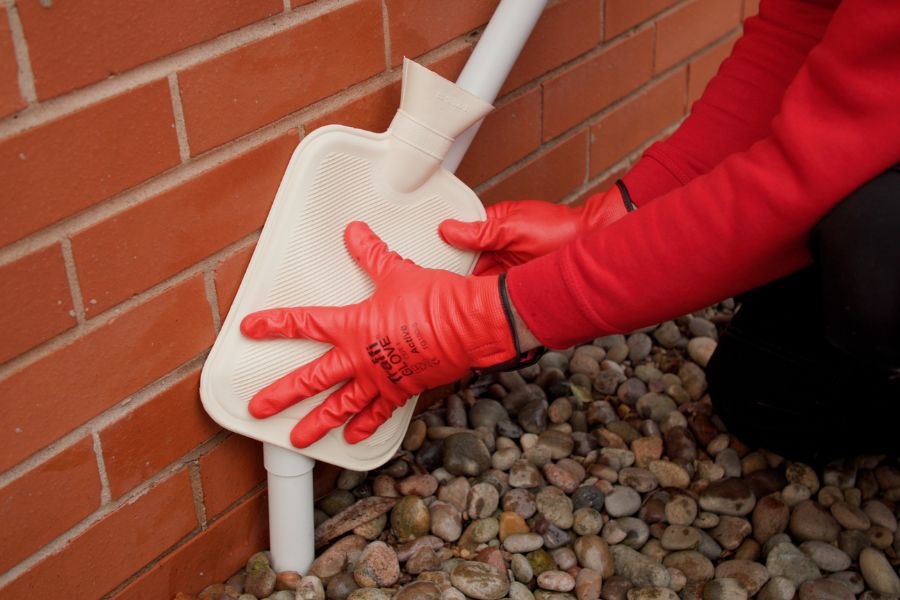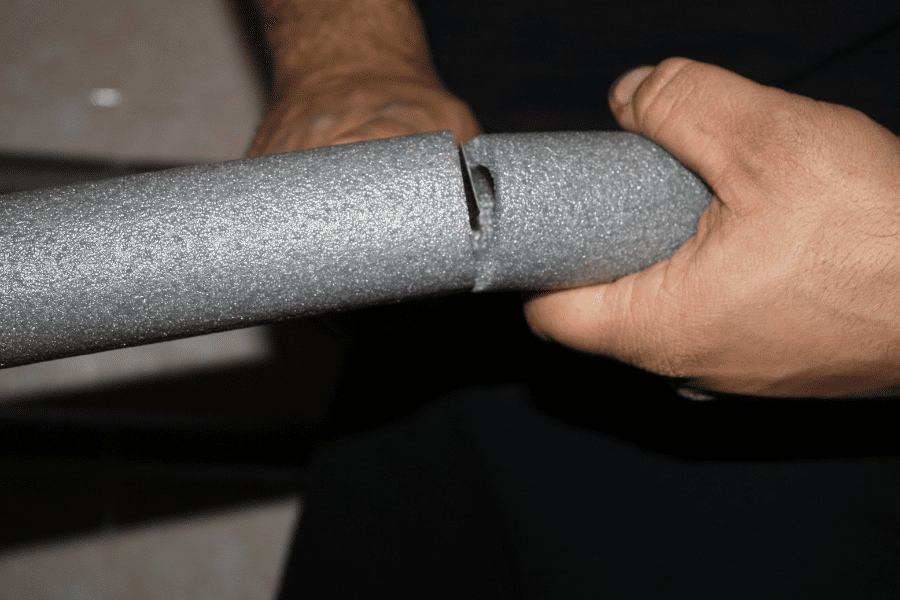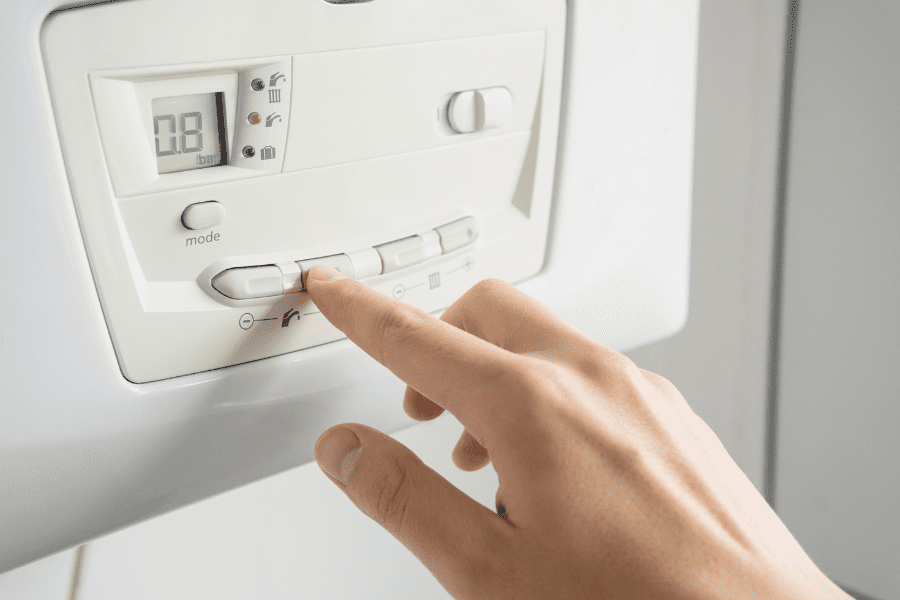Home heating advice
How to thaw a condensate pipe
05 Mar 2017 • 6 minutes

Home heating advice
05 Mar 2017 • 6 minutes

Operational Improvement Manager

Has your boiler stopped working overnight? If it’s happened after a particularly cold night, don’t panic—your condensate pipe may just be frozen. And if that’s the case, it might be time to put the kettle on…
From locating the blockage to restarting your boiler, we grilled our Home Experts on how to sort the problem, and get your home warm again in no time.
A condensate pipe carries condensation from your boiler to your outside drain. It’s usually a white or grey plastic pipe that travels from your boiler through the wall directly outside where your boiler is located.
During cold weather, the condensation in this pipe may freeze and cause a blockage causing the condensation to back up into the boiler and cause it to shut down.
If your boiler condensate pipe is frozen there will usually be a few tell-tale signs:
The fault code you see on your boiler if you have a frozen condensate pipe will depend on which brand of boiler you have. You can usually find a list of boiler fault codes either in you boiler manual or online from the boiler manufacturers website.
We’ve listed some popular brands and their specific fault codes below. Always check your boiler manual to double check the fault code for your specific model.
| Brand | Fault Code |
|---|---|
| Baxi | E133 or E28 |
| Ideal | L2, LF, or F2 |
| Glow-Worm | F28 or F29 |
| Potterton | E133 or E28. Or, the error code may alternate between E1 and E33 |
| Worcester Bosch | EA |
| Vaillant | F28 or F29 |
| Viessmann | F4 |
Even if you take the utmost care of your boiler, it will struggle to function if its condensate pipe freezes. In our video below, one of our Home Experts, Chris, explains exactly how to thaw a condensate pipe safely.
However, if you don’t feel confident when following this guide then you should contact an expert boiler engineer for help.
Depending on the make and model of your boiler, a frozen condensate pipe may be indicated by a ‘fault code’ or warning light on the boiler’s display. Gurgling or bubbling sounds coming from the boiler or the condensate pipe are another sign that the condensate pipe has frozen.
The pipe is probably frozen at its most exposed point. This may be the open end of the pipe, or at a bend or elbow. Running your hands over the pipe until you find a section that feels colder than the rest should help you identify the blockage quickly.
Most condensate pipes freeze near to the ground, so it’s simply a case of pouring the hot water over the pipe slowly.
The best way to thaw your condensate pipe is to apply hot towels or a hot water bottle to the frozen part of the pipe.
First, boil some water. If you don’t have a hot water bottle and are using hot towels instead, make sure to cool the kettle for at least 15 minutes once it’s boiled. Do not use boiling water as you’ll need to handle the towel safely.
Fill a hot water bottle or soak the towel and press them against the frozen blockage in your condensate pipe until it melts. Repeat the process if necessary.
Top tip: If the temperature is around -2 degrees or lower then water can freeze quickly. If you’ve used the towel method, be careful not to slip on any drips that might have frozen.
Once the frozen section has been melted and cleared, check your boiler manual for instructions on how to reset the boiler correctly. Your boiler should now restart.
It may take several attempts before your boiler restarts, but if it doesn’t, you may need to call out a qualified boiler engineer.
It’s easy to thaw your condensate pipe once it has frozen, but it’s better to prevent your pipes from freezing in the first place. We asked Home Expert Chris for tips on how to stop your condensate pipe freezing, and save you the hassle of waking up to no hot water.
If your condensate pipe isn’t already insulated, wrap it in some old towels immediately to prevent it freezing.

As soon as you can, get down to your local DIY store and buy some foam pipe insulation to wrap the condensate pipe in (just make sure to check it’s for external use). This insulation comes in a variety of sizes, so measure the pipe’s diameter before you buy.

During extreme weather conditions, even proper insulation may not be enough to prevent the condensate pipe from freezing. It may help to temporarily run your boiler with the boiler thermostat set as high as possible for as long as the cold spell lasts. But if you continue to experience problems, it’s best to call out a qualified boiler engineer for help.
Add a leaf guard over the open end of your drain to remove any wind chill. This will reduce the chance the water in your condensation pipe is exposed to sudden drops in temperature—meaning it’s less likely to freeze.
If you’ve followed our advice on how to thaw a condensate pipe but your boiler still isn’t working, try diagnosing your central heating problems. Alternatively, you may need to call out a qualified boiler engineer.
HomeServe’s nationwide network of Gas Safe engineers are here to help. Simply get in touch, safe in the knowledge you can count on us to keep you feeling toasty this winter.
We try to make the advice on our website as useful and reliable as possible. However, the purpose of this advice section of the website is to provide homeowners and private landlords with general guidance and useful tips only. It doesn’t necessarily deal with every important topic or cover every aspect of the topics with which it deals and might not be relevant or appropriate in all circumstances. It is not designed to provide professional advice or financial advice and should not be relied on as such. Read our disclaimer in full.
Our help & advice articles cover Plumbing, Home heating, Electrical, Energy-saving and Home maintenance.